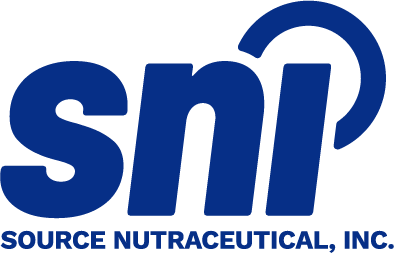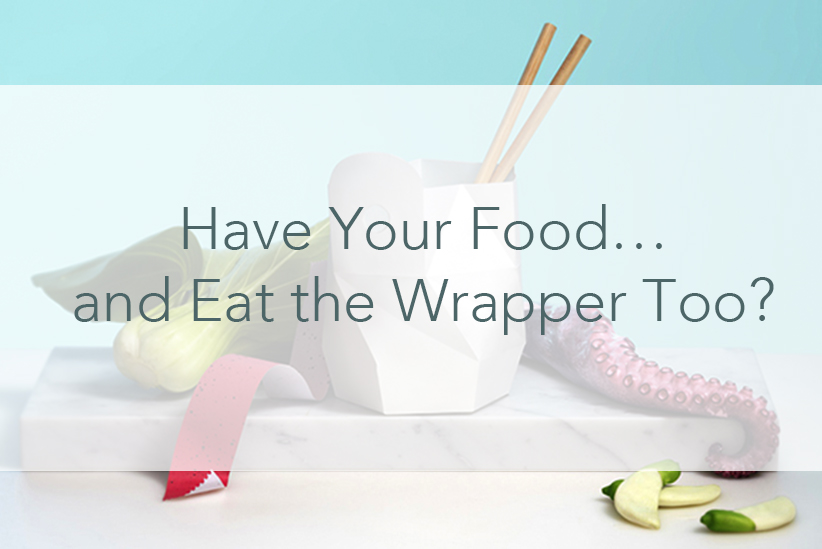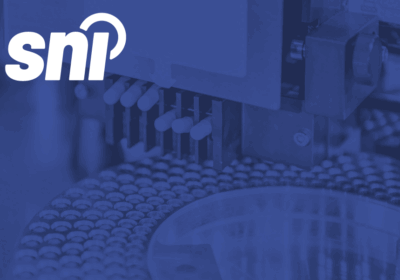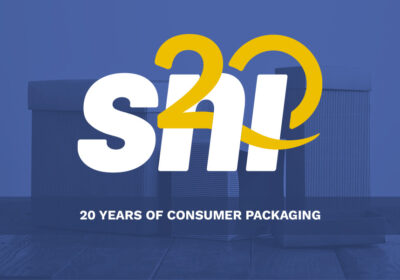With billions of tons of plastic waste filling landfills each year, consumers are becoming increasingly conscious of their impact on the environment, from reusing grocery bags to eating more sustainably. With the demand for eco-friendly products and packaging on the rise, many companies are making different attempts to replace excess plastic with more ecofriendly packaging… even going as far as creating packaging that you can eat! According to Sufio: the demand for less wasteful products won’t slow down anytime soon.
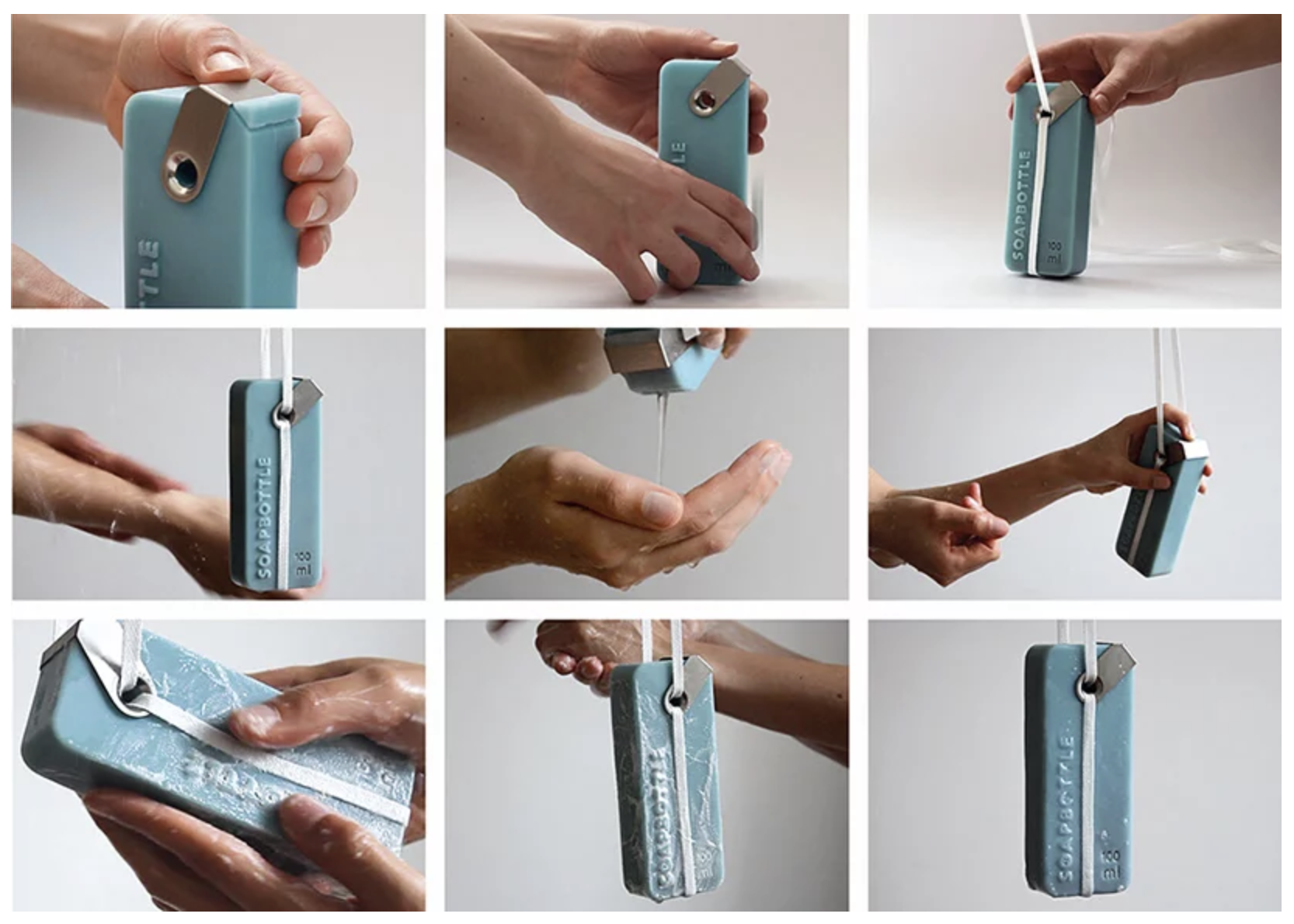
Berlin-based designer Jonna Breitenhuber is working to tackle the growing issue of plastic waste by creating a product with packaging that can also be used, named Soapbottle [above]. Waste is completely avoided with the Soapbottle, as the product packing itself can also be used once it is empty. The bottle that carries the liquid soap is created out of solid soap, and as soon as the consumer has emptied the bottle, the empty soap bottle can then be used as a hand soap or turned into detergents or cleaning agents.
Designboom.com reports that roughly 11 bottles of shower gel, and 10 bottles of shampoo, get tossed each and every year! This results in around 75 kilotons of plastic waste ending up in landfills. Even more upsetting is the fact that only 1 in 5 people consistently recycle items from the bathroom. With statistics like these, it’s comforting to know that designers are working to create zero waste products such as the Soapbottle.
Designer Mi Zhou from Jiangnan University also creates similar products to reduce bathroom plastic waste, making shampoo packaging out of solid soap.
Her designs have a more luxurious feel, with some of the containers resembling antique perfume bottles, which is a contrast to the simple design of Breitenhuber’s Soapbottle.
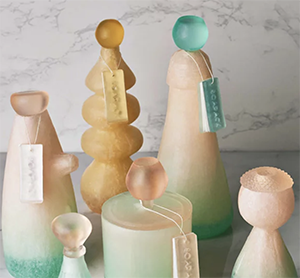
Tomorrow Machine, a Swedish design studio based in Stockholm and Paris, is a team that’s also working to design creative products that eliminate waste. A series of products titled This Too Shall Pass experiments with simple and innovative packaging designs for products such as smoothies, olive oil, dry rice, and grains.
Summing up their vision and goal, Tomorrow Machine states that “We try to keep the material in focus and bring out the properties that we like in it. That’s why we usually keep the shapes simple. We also believe there is no need to make products and packaging more complicated than [it] should be. It’s a matter of reducing all elements that are unnecessary, not only for aesthetic reasons, but for sustainability reasons. We think that every component and detail that goes into packaging or product should be absolutely motivated by the function, so we don’t add elements for aesthetic reasons only.”

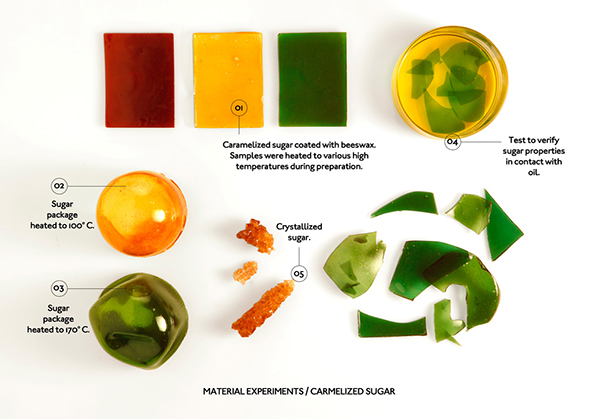
The olive oil is a great example of simple, zero waste packaging [above]. Made of caramelized sugar and wax, this interesting green container cracks open like an egg. Once the container is cracked, the wax coating can no longer protect the sugar, and melts as soon as it comes in contact with water.
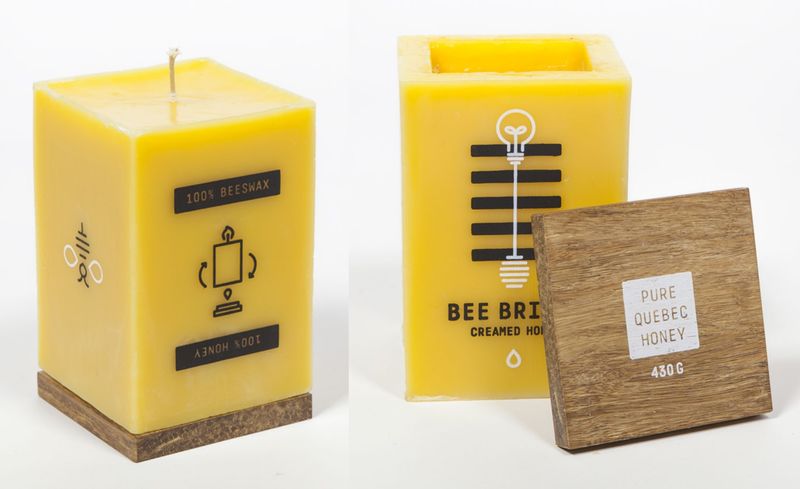
Packaging that can be reused (or serves more than one purpose) not only impacts the environment positively, but also gives consumers more bang for their buck.
Designer Maude Paquette-Boulva came up with a clever concept for honey packaging: a square honey container made out of beeswax, that can be flipped over and used as a candle once the honey has been used.
Paquette-Boulva’s website gives a short description of the product, stating that “Bee Bright was conceived as part of the international Packplay exhibition at the Université du Québec à Montréal. Due to the growing concern around our packaging waste, this all-beeswax honey container was created to be entirely biodegradable. When turned upside down, the container can be used as a candle, with the wooden lid serving as a base and later composted.”
Companies such as Leaf Republic, NVYRO and Monosolare putting in an effort to tackle the issue of single use plastics.
Leaf Republic focuses mainly on disposable tableware created almost entirely of leaves (minus some of the bowls with lids, which are made using bioplastic or recycled plastic). NVYRO shares a similar focus, creating 100% biodegradable single use food and drink containers, with a full range of bowls, cups, plates and trays available for purchase. Monosol partners with companies and businesses to provide water-soluble packaging for a variety of products, with the goal being to replace the wrapping for common items such as detergents, personal care products, and food goods. The worry of how the packaging might negatively affect the environment is eliminated, as the packaging completely dissolves in water!
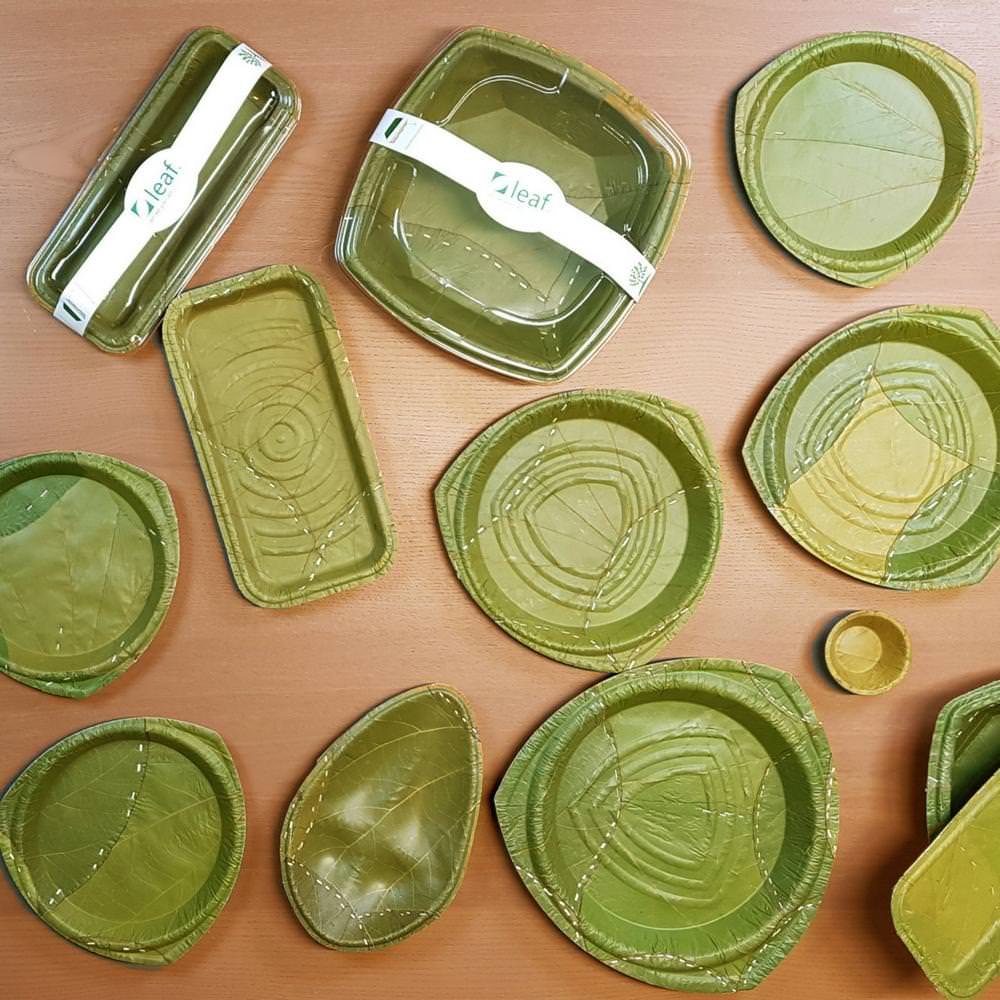
According to Environmental Defence: The issue of plastic waste in Canada alone is enough to get alarmed over, with nearly 90% of plastics ending up in lakes, parks, landfills and oceans. With less than 11% of plastics making it to the recycling bin, it’s clear that relying on consumers to recycle their plastic products simply isn’t enough.
It’s comforting to see companies and designers taking initiative and coming up with new ways to package product that rely less on the actions of the consumers.
It’s promising to see that Global Banking & Finance Review state that the number of consumers globally who have said that they are willing to pay more for eco-friendly packaging has grown from 47% to 59%. Environmental impact, social responsibility, and sustainability are all growing controversial topics in consumer retail behaviour.
The real question is: will these subjects really matter to consumers? Time will tell!
Header photograph (from It’sNiceThat Articles): Skidmore, Maisie (09/07/2014). “Meet Tomorrow Machine, the studio doing mind-blowing things with food packaging. Retrieved from https://www.itsnicethat.com/articles/tomorrow-machine
